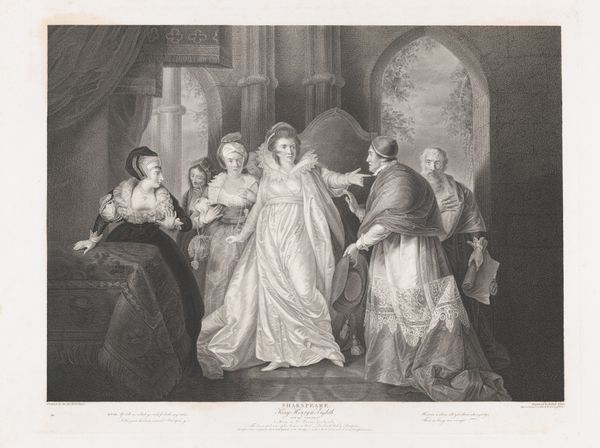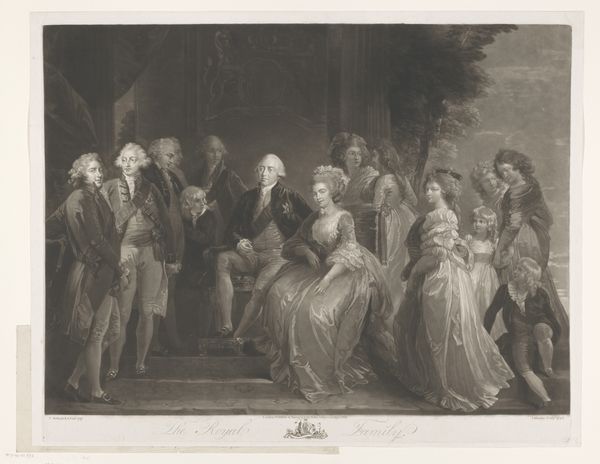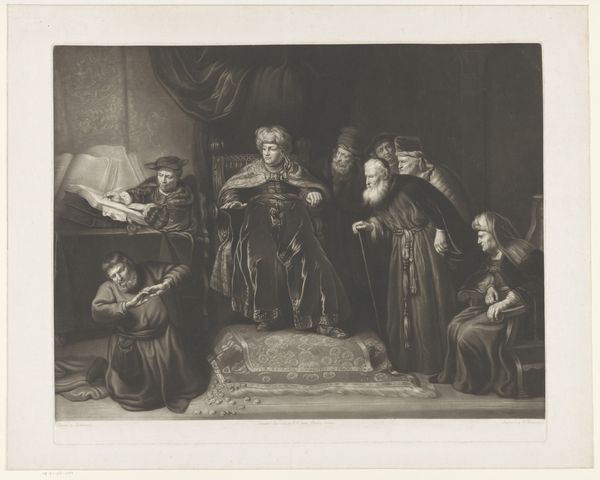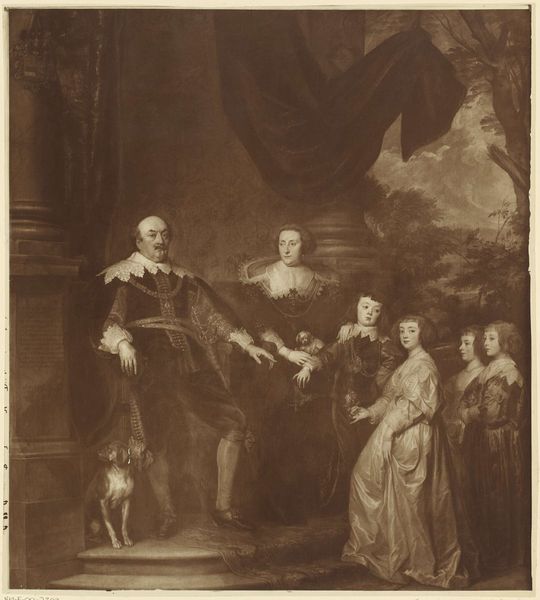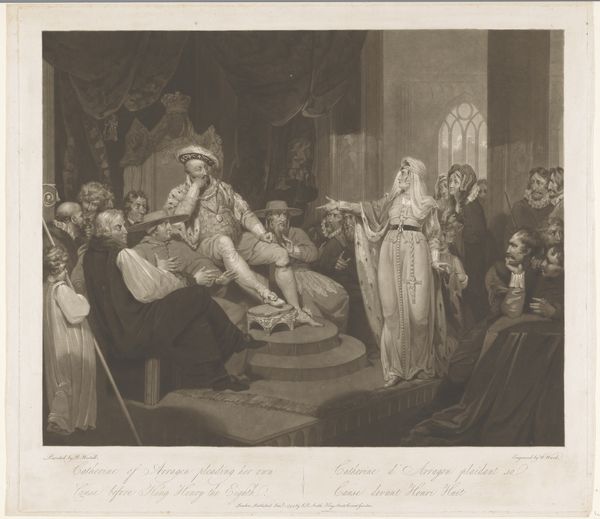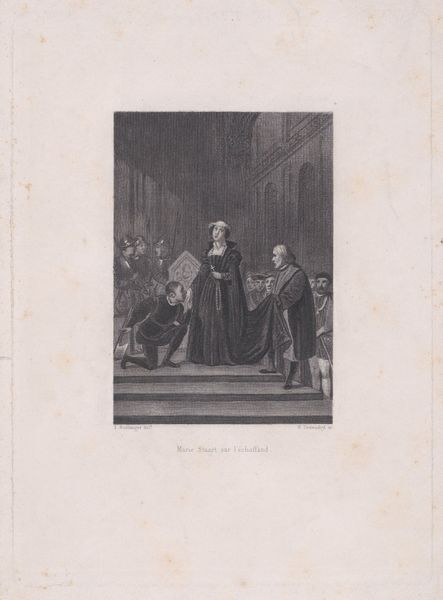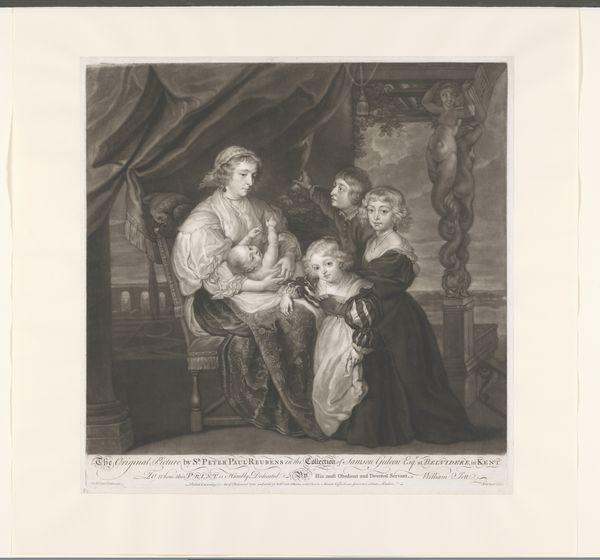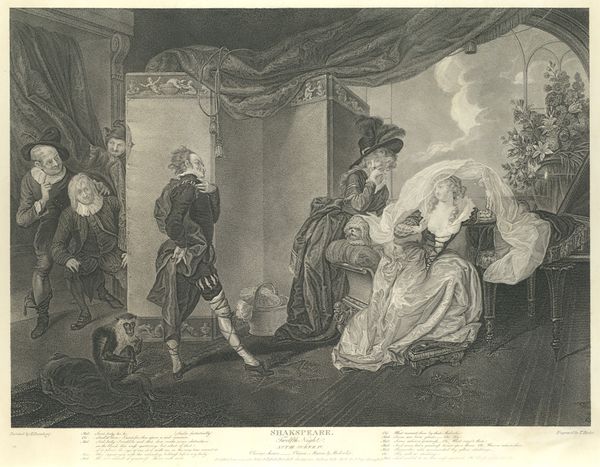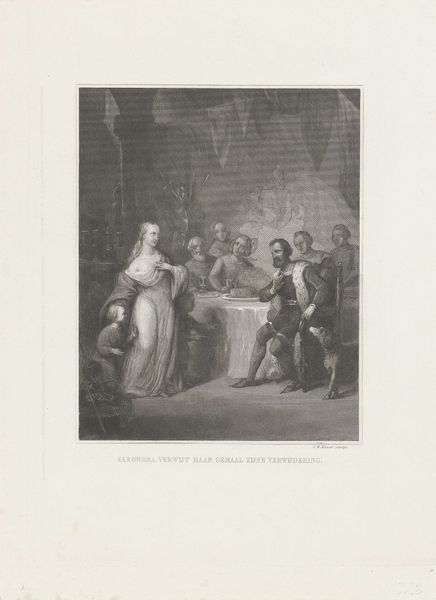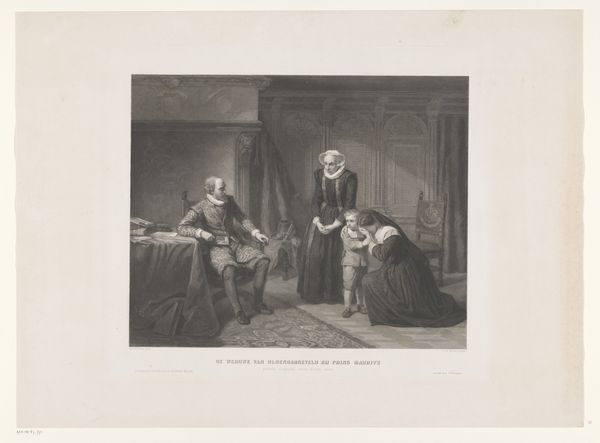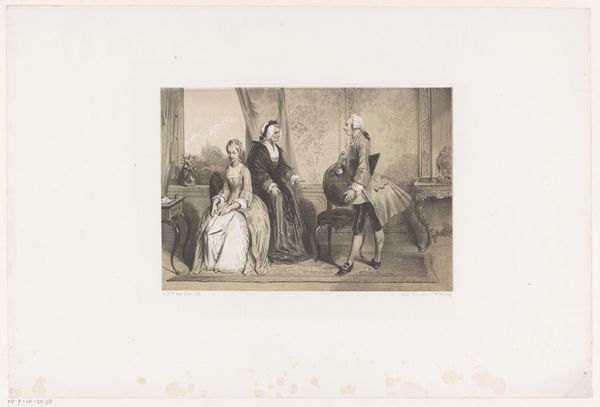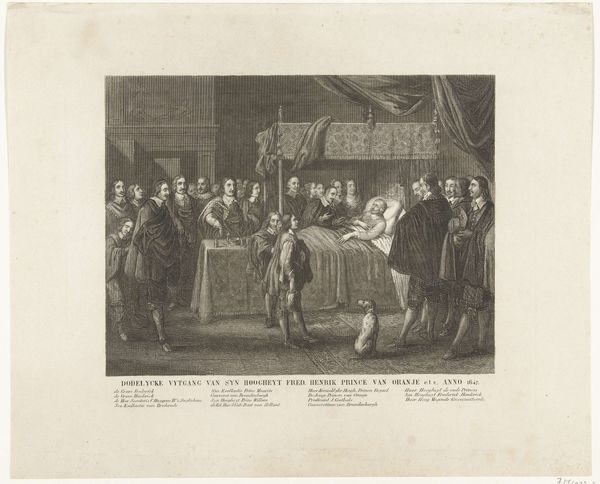
print, engraving
#
portrait
#
dutch-golden-age
# print
#
archive photography
#
historical photography
#
historical fashion
#
19th century
#
genre-painting
#
history-painting
#
engraving
Dimensions: height 480 mm, width 643 mm
Copyright: Rijks Museum: Open Domain
Curator: This engraving, titled "Familieportret," dates from between 1847 and 1854 and is attributed to Gerhardus Fredericus Eilbracht after Bartholomeus van der Helst. It's quite a detailed print currently residing in the Rijksmuseum. Editor: Immediately, I'm struck by the clear power dynamics at play. It seems almost staged, carefully constructed to convey a specific message about status and legacy in 19th-century Dutch society. Curator: Considering its reproductive nature, this work's value isn't solely tied to artistic genius but the labor required for engraving— the careful translation of paint into print. The accessibility it offered to a wider, arguably less affluent, audience matters, too. Who did these portraits seek to reach? Editor: Exactly. Beyond the artistic endeavor is this image's participation in reinforcing societal structures and values. Note the detailed clothing that would be the product of so much labor and commerce of textiles at the time, also how this engraving offered a chance to reflect on social mobility and family identities for its viewers. Who had the time and income for a formal portrait—either original or as an engraving? Curator: And let's consider the engraving process itself, how each line carefully carved contributes to light and shadow. It’s a skilled reproduction technique that demands acknowledging craft alongside any claims of fine art status. Editor: It becomes a conversation piece about family ideals and the broader contexts of its time. A glimpse into the world of the sitter and viewers with their relationship to money, gender, and social standing during the mid 19th-century, with an interesting look at 17th century historicism. Curator: Agreed, examining this print exposes the mechanics of art production. Editor: Absolutely, and also underscores the broader societal conversations it evokes.
Comments
No comments
Be the first to comment and join the conversation on the ultimate creative platform.

